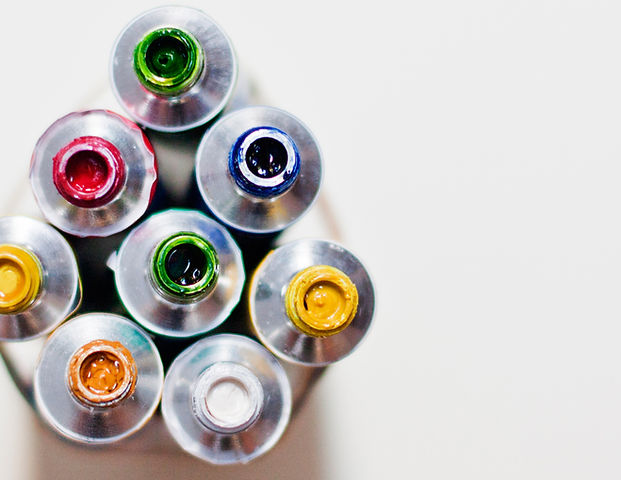Art Therapy
Art therapy combines psychotherapy and the therapeutic value of creating art. The World Health Organization has acknowledged that art therapy improves mental and physical health. Art therapy promotes integration of both hemispheres of the brain (the left hemisphere is responsible for logic and language; the right hemisphere deals with creative and emotional processes), allowing for information to be processed in a different way than just talking allows. Art therapy also reaches the unconscious in a way that can’t be accessed through verbal therapy. Art therapy allows for non-verbal expression of emotions, thoughts, and experiences that can’t be put into words.
There are two overarching approaches to art therapy:
-
Art as Therapy: The process of making art alongside an art therapist has therapeutic benefits. It can be easier to talk about difficult topics while your hands are busy.
-
Art Psychotherapy: Clients intentionally make art to explore from a perspective of the art being a representation of their inner experience. Art activities that specifically address what you are working on will sometimes be suggested, or clients can have their own ideas of how to express their inner experience creatively. The art therapist is trained to ask questions and explore insights with the client to help the client find deeper meaning in the art.
Art and play are the language of children; it’s how they express their emotions, thoughts, and experiences. Art therapy allows them to work through challenges and express themselves in their language that feels safer.
Creativity is how humans have always explored meaning and a form of communication- I believe people of all ages can benefit from connecting with their creative side. Adolescents and adults can engage in art therapy to work with challenging emotions, explore and express themselves in new ways, and discover a deeper understanding of themselves. Groups can be helpful in developing skills and experiencing a sense of belonging and shared experiences.


Is Art Therapy for you?

Who is art therapy for?
-
People of all ages and backgrounds
-
Anyone who wants to heal through creative expression
-
No art skills required

Common benefits:
-
Increased and improved self-expression
-
Deeper understanding of self and awareness of strengths
-
Improved communication with others, relationship skills, connection, and belonging
-
Increased self-awareness, self-confidence, and identity formation
-
Experiences of success, experimentation, relaxation, enjoyment, and belonging
-
Improved skills around problem-solving, managing stress, emotional regulation, impulsivity, and coping with mental health challenges
-
Improved overall mood and wellbeing
Art Therapy can be an effective approach for creative expression, gaining insight, healing, and developing coping skills for:

-
Anxiety, depression, and other mental health challenges
-
Stress and overwhelm/burnout
-
Trauma
-
Grief and bereavement
-
Overwhelming emotions
-
Relationships & interpersonal skills
-
Self-expression
-
Self-confidence & self-esteem
-
Self-understanding and exploring identity
-
Life transitions & coping with changes
-
Problem-solvingImpulsivity
-
Social/emotional/behavioral difficulties at school

What to Expect from your Art Therapy Experience
Session structures and approaches are created uniquely for each individual family dynamic, or group.
Intake/Consultation
-
30 minutes complimentary
-
Can be done over the phone or in person
-
If the client is under the age of 12, this meeting will be with the caregiver. If the client is over the age of 12, they can consent to participate in art therapy without their caregiver. However, I do encourage them to include their parents in the process to whatever degree they are comfortable.
Sessions
Your experience in art therapy is structured around what you are hoping to work on.
The amount of sessions and session length is determined based on what you are working on, and may be adjusted as needed. Sessions can be short-term (6-8 sessions weekly or bi-weekly) or more long-term if you are working through multiple challenges and have layers of trauma that need to be approached gently.
You may find yourself being more introspective between sessions, contemplating any insight you gained from sessions- this is normal and healthy as you integrate what you have learned in sessions into your daily life. I encourage you to make art or journal between sessions when this arises.
Ending sessions is an intentional part of the process, planned to set you up for better long-term success and provides the opportunity to close the therapeutic process in a healthy way. Sometimes clients like to have more spaced out sessions as they progress or switch towards being in a group to have that sense of support while they transition out of needing support.
Visit the "Services" page to learn more about different types of art therapy:
-
One-one sessions
-
Family sessions
-
Caregiver-child sessions
-
Groups
